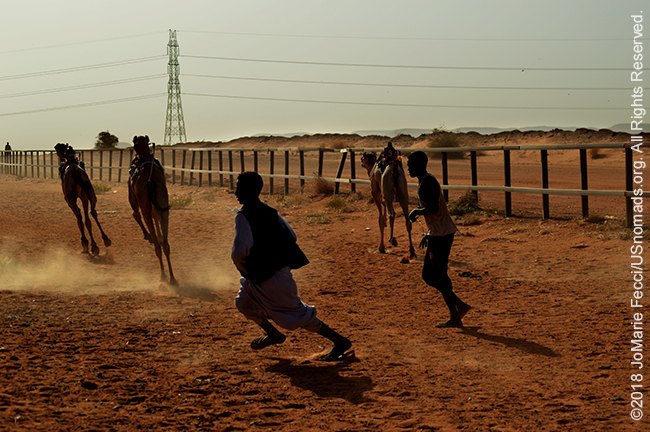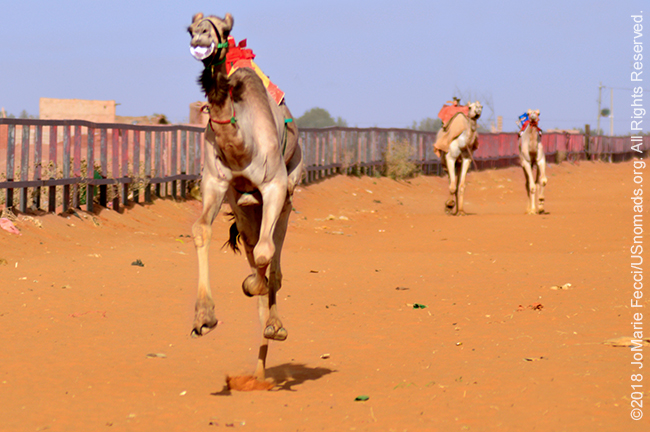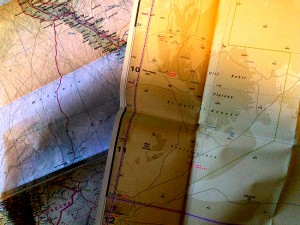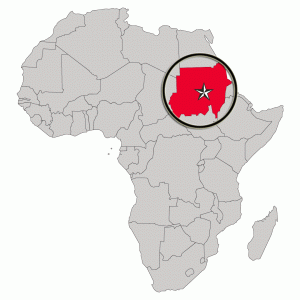
KHARTOUM, SUDAN (13 April 2018) — The street outside the Acropole hotel was quiet this morning. It is Friday and no one is out early apart from me, waiting excitedly for Sami and Gammal to join me as we head off to the Omdurman camel market to see the camel racing. I had no idea what to expect but I was excited anyway.
We got there early and learned it would not actually be any kind of formal “race” but rather a combination of training and an opportunity to put some of the animals to the test in informal “scrimmage” type races. For me it was still new and interesting, and I was content to get to experience this more “ordinary” moment of desert life.
Groups of men and groups of camels were moving across the dusty market area towards a “track” which was a single narrow lane fenced off by a simple metal barrier, with openings at specific points along the way. The whole length of it was about six kilometers, but only adult camels raced that distance, and the strategic openings were actually start points for shorter segments. A few men were standing along the edge of the fence near the “finish” and in the distance we could see the first camels coming towards the line. As they passed in front of us, I realized that there are moments when they are running that all four of their feet are completely off the ground. I had never really seen camels run at this speed before and it was surprising, because I always thought of them in that slow peaceful pace of the caravan.
I was also surprised to see that they were rider-less. Small handmade dolls with little whips that seemed to work based on the movement of the camel itself were attached to the top of each animal. It took me some time to understand that there was a kind of organization to what initially seemed chaotic. A rider would take a group of camels up to the start line, then wait for his truck to arrive. The pickups often carried small groups of friends and supporters, and when all was in place the men would set the camels loose with encouragement in a chaotic dust cloud of running men, flowing white robes and galloping camels. Everyone would then pile back into (and on top of) the pickup, driving alongside the racing camels, shouting them on as they ran. The fastest animals were followed by the riders’ own mount who was left to “sweep” the rear and somehow “herd” any of the more unruly animals.
Some of the best camels for racing seem quite aggressive and almost wild, snarling and spitting, straining at the leads of their handlers. They have a completely different temperament than the solid riding camels I was more familiar with. The men here know right away which animal might make a good racer — a tall slim profile and a certain energy are tell-tale signs.
As I gleaned a bit of information here and there I tried to observe more closely. Some of the men who had come to watch were from the same region as the camel herders and coming out to the “races” countered some of their “homesickness.” We met a small group who were serving in the military around Khartoum. It was their day off and they came out and enjoyed the nostalgia, even posing with one of the more aggressive camels for a few selfies. (I was the only “tourist”–and the only woman–at the track). After a few races we visited briefly with some of the men and boys from one family, who explained to us that there are often friendly races for bragging rights between owners pitting their best animals against each other — with family and clan members supporting their entry. These contests can get lively, but also provide an outlet of fun and amusement for everyone.
Apparently the more serious business of selling the racing camels is conducted as well, with buyers coming from outside Sudan willing to pay a good price for the best animals. It is a strange combination of tradition, commerce and globalization all rolled into one.
We said goodbye to the family, as one of the older sons fed some of his camels in the shade of a make-shift stall. The younger boys did their best to strike a hip hop pose in front of their dad’s Toyota, one more cultural blend in a place that has seen civilizations meet and mix since the beginning of recorded history…

ABOUT THE EXPEDITION

JoMarie Fecci, of USnomads, sets off on an independent scouting trip across Egypt and Sudan in preparation for an up-coming Sahara expedition. Driving locally-sourced Toyotas and working with small local teams in each region, she will traverse a winding route that jumps off from key points along the Nile as far south as Khartoum, where the Blue and White Niles meet. During the journey she will visit a series of UNESCO world heritage sites focused on the ancient civilizations that occupied the region and meet with local communities. The primary goal of this mission is to assess terrain, security, driving conditions, logistical concerns and approximate timeframes for future travel.
WHERE WE ARE

The Sudan in Northeast Africa is bordered by Egypt to the north, the Red Sea, Eritrea and Ethiopia to the east, South Sudan to the south, the Central African Republic to the southwest, Chad to the west and Libya to the northwest. The country has a total area of 1.861.484 square kilometres (718.722 square miles), making it the third largest in Africa. The terrain is generally flat plains, broken by several mountain ranges. In the west the Deriba Caldera (3,042 m or 9,980 ft), located in the Marrah Mountains, is the highest point in Sudan. In the east are the Red Sea Hills. The name Sudan derives from the Arabic “bilād as-sūdān” or “the lands of the Blacks.” The population of roughly 37 million people is made up of 597 different ethnic or tribal groups speaking over 400 different languages and dialects. Sudanese Arabs are by far the largest ethnic group, estimated to account for 70% of the population. They are almost entirely Muslims. The majority speak Sudanese Arabic, with some different Arabic dialects, while many Arabized and indigenous tribes like the Fur, Zaghawa, Borgo, Masalit and some Baggara ethnic groups, speak Chadian Arabic. The nation’s official languages are Arabic and English. Sudanese history goes back to Antiquity, when the Meroitic-speaking Kingdom of Kush controlled northern and central Sudan and, for nearly a century, Egypt.